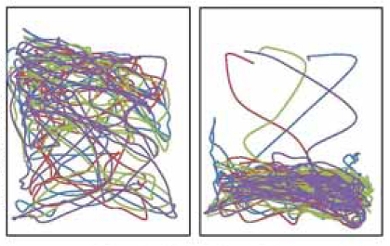
Aquatic animals harmed by our noise
Two PhD defences on 9 June by behavioural biologist Errol Neo and underwater acousticianan Özkan Sertlek relate to measuring noise in the North Sea and the harm this noise can do to aquatic animals and their surroundings. Little is known about how harmful human noise can be to aquatic animals.
Natural and human sounds underwater
Although we may think it is silent underwater, this is certainly not true. It is not just the rain, storms, waves and other natural sounds that make a lot of noise underwater; humans make quite a racket too. Take intensive shipping with its ever larger and louder ships, cables being laid on the seabed and piles being driven for bridges, oil rigs and wind turbines. As visibility can be poor underwater, marine inhabitants are largely dependent on hearing and producing sounds for their communication and orientation, sometimes over huge distances. Sound propagates much better in sea water than in air.
Effect of sound on the marine environment
Fish have almost the same ears as land vertebrates, but they are internal. What is the effect of all this noise on aquatic animals? We know that a sudden burst of noise or long-term exposure to loud noise (nightclubs) can damage our hearing. This is no different in aquatic animals. So what effect does the continuous noise, pulsating or constant, caused by humans have on aquatic animals and the marine environment? Does it disrupt spawning, can they still find a partner, do they still hear predators approach, can they still use sound to orient themselves over great distances? Research into this is in its infancy.
Seabass

noise.
The National Ocean and Coastal Research Programme (ZKO) of the Netherlands Organisation for Scientific Research (NWO) is funding a large project to study the effects of underwater noise on fish and marine mammals in the Dutch part of the North Sea. Both PhD studies are part of this project and were conducted at the Institute of Biology Leiden in collaboration with TNO Acoustics & Sonar, The Hague. For his dissertation, Errol Neo studied the behaviour of seabass who were exposed to noise, both constant sound and sound with intervals. He conducted part of the research at SEAMARCO research station in the province of Zeeland. Here he released groups of four seabass from a net into a big tank measuring seven metres long, four metres wide and two metres high. When sounds were played, the fishes swam closer together and sank down.
Swimming patterns resumed
After some time the seabass resumed their regular swimming patterns and appeared to have become accustomed to the noise. The researchers noticed that the fishes sooner became accustomed to louder sounds that were played without interruption than to quieter ones that were played at intervals. After each interval the sound appeared to scare them again. One limitation to the study was that the fishes could not swim away. The tests were repeated in a more natural situation: a large floating net in the Jacobahaven, a harbour in the Oosterschelde estuary. The results were similar.
Scientific models
In another part of the NWO/ZKO project, Özkan Sertlek studied the distribution and nature of sound underwater in the Dutch part of the North Sea. He selected, combined and optimised scientific models for sound power level and sound propagation, and used the standards for the measurement of underwater noise to validate them. He then took existing data on the sound produced by ships, underwater explosions (a lot of Second World War munitions are still found on the seabed and detonated), seismographic research and wind and created separate noise maps The next step was to integrate these. With this work alone he has made an important contribution to the modelling of sound propagation, which is important for predicting effects.
Contributions of different sources
The largest contribution to the annual noise energy budget is coming from ships at the low frequencies and from wind at the high frequencies. At some local regions in the southern part of the Dutch North Sea, underwater explosions and seismic surveys can be louder than ships, except for the busy area in the approach of the harbour of Rotterdam.
Linking to biological data
In the next step of his research Sertlek linked his data to biological data on the distribution and swimming patterns of porpoises. The data came from a third study in the NWO/ZKO project, by postdoc Geert Aarts. Within the project it was found that annually 800 to 8,000 porpoises suffer from permanent hearing loss and more than 10,000 from temporary hearing loss as a consequence of the detonation of old munitions.
Importance of research into the effect of noise
Research into the effect of noise on aquatic animals is important for their protection in itself but also because fish are an important source of food for many people around the world.
The European Marine Strategy Framework Directive (MSFD) requires all EU member states to devise a strategy for the protection, conservation and recovery of the marine environment. This also includes sound: the noise of human activity must not exceed a level at which it adversely affects the marine environment. As yet, there is no such directive for freshwater – rivers and lakes.
